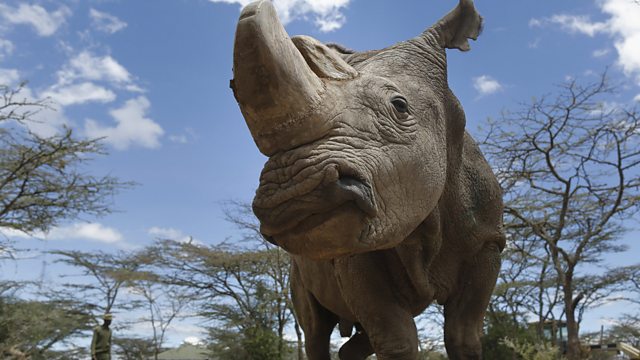
Bringing Back the Northern White Rhino
White Rhino; 3D Bones; Tour de Flanders footage and Phenology; American Dogs; Autism Bots; Roaring; Slug Science.
Rhinos
The northern white rhinoceros is the world’s most endangered mammal. The death earlier this year of the last male of this rhino subspecies leaves just two females as its only living members. Research out this week has adopted new techniques in reproductive medicine as a last ditch attempt to preserve these animals. Thomas Hildebrandt from Leibniz Institute for Zoo and Wildlife Research discusses the ambition with Roland Pease.
3D Bones
Broken bones often fix themselves without any help. But big breaks can need a bone graft. Scientists at the University of Glasgow are combining 3-D printing of plastic or gels with stem cells - to grow replacement “bones” in the lab. So far it’s been tried in a dog and they hope to eventually help landmine victims. Peter Childs, Project Manager at the Centre for Cell Engineering at the University of Glasgow, explains to Claudia Hammond.
Tour de Flanders footage and Phenology
The Tour of Flanders cycle race is the unlikely scene for an experiment of nature. But if you look at the scenery, the trees can hold clues to what might be happening with the climate. Many trees are very responsive to changes in temperature. So climate change could disrupt the eruption of leaves and blossom each spring. But data on the timings of this ‘phenology’ can be scarce. Belgian cycling enthusiast and Bioscience Engineer, Dr Pieter De Frenne talks to Roland Pease about how research into the trees is throwing light on their changing life cycles.
Autism bots
Machine learning is being used to see whether it can help children with autism spectrum conditions. MIT researcher Ognjen Rudovic tells Gareth Mitchell how robots could be a useful ally for therapists when it comes to perceiving a child’s engagement.
Roaring
Can the size of a roar be used to accurately determine physical strength?’ Or can a roar deceive, and make you sound tougher than you actually are? That’s what Jordan Raine from the University of Sussex decided to find out, not with lions or tigers or bears but in us. He speaks to Adam Rutherford.
Slugs
Slugs are the inspiration behind a pioneering medical adhesive which might repair even organs which move like the heart and lungs. The slime produced by the Dusky Arion slug is so sticky it acts like a glue even when wet. Dr Adam Celiz, lecturer in Bioengineering at Imperial College London, explains how the sticky slime might be put to good use.
The Science Hour was presented by Roland Pease with comments from Kerri Smith
Producer: Katy Takatsuki
(Picture: Sudan, the world’s last male northern white rhino. Credit: EPA/Getty Images)
Last on
More episodes
Previous
Next
Broadcast
- Sat 7 Jul 2018 11:06GMT����ý World Service Americas and the Caribbean
Podcast
-
![]()
Unexpected Elements
The news you know, the science you don't

